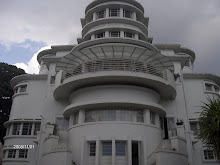Period of English Literature
The meaning of English literature is a literature which written in English. Most English literature periods have many names. Some of these names are debated by linguist. There are the periods of English Literature.
1. 450-1066 Old English (Anglo-Saxon) Period
The first English literature written in vernacular or also known by Old English. The old English literatures are an oral literary. Most Old English is adaptation of the old Germanic war poems. Beowulf is the most popular and the greatest of Germanic epics. The poetry bought to England by someone, she/he handed down orally from one generation to another generation. Anglo-Saxon peoples remember it with the helped by accustomed. Alfred the Great translated some books of Latin prose into Old English, and also recorded the important events in England.
2. 1066-1500 Middle English Period
The important work of this period was Guillaume de Lorris’ and Jean de Meun’s Roman de la Rose. Around 1100-1350, the non-Latin literature was produced in the French dialect. About 1500, the standard literary language took the form of “modern English”.
3. Renaissance literature
Following the introduction of a printing press into England by William Caxton in 1476, vernacular literature flourished. The Reformation inspired the production of vernacular liturgy which led to the Book of Common Prayer, a lasting influence on literary English language. The poetry, drama, and prose produced under both Queen Elizabeth I and King James I constitute what is today labelled as Early modern (or Renaissance).
4. Early Modern period
Elizabethan Era
The Elizabethan era saw a great flourishing of literature, especially in the field of drama. The Italian Renaissance had rediscovered the ancient Greek and Roman theatre, and this was instrumental in the development of the new drama, which was then beginning to evolve apart from the old mystery and miracle plays of the Middle Ages.
Jacobean literature
After Shakespeare's death, the poet and dramatist Ben Jonson was the leading literary figure of the Jacobean era (The reign of James I). However, Jonson's aesthetics hark back to the Middle Ages rather than to the Tudor Era: his characters embody the theory of humours. According to this contemporary medical theory, behavioral differences result from a prevalence of one of the body's four "humours" (blood, phlegm, black bile, and yellow bile) over the other three; these humours correspond with the four elements of the universe: air, water, fire, and earth. This leads Jonson to exemplify such differences to the point of creating types, or clichés.
Jonson is a master of style, and a brilliant satirist. His Volpone shows how a group of scammers are fooled by a top con-artist, vice being punished by vice, virtue meting out its reward.
5. 18th century
During the Age of Sensibility, literature reflected the worldview of the Age of Enlightenment (or Age of Reason) – a rational and scientific approach to religious, social, political, and economic issues that promoted a secular view of the world and a general sense of progress and perfectibility. Led by the philosophers who were inspired by the discoveries of the previous century (Newton) and the writings of Descartes, Locke and Bacon.
They sought to discover and to act upon universally valid principles governing humanity, nature, and society. They variously attacked spiritual and scientific authority, dogmatism, intolerance, censorship, and economic and social restraints. They considered the state the proper and rational instrument of progress. The extreme rationalism and skepticism of the age led naturally to deism; the same qualities played a part in bringing the later reaction of romanticism. The Encyclopédie of Denis Diderot epitomized the spirit of the age.
During the end of the 19th century Ann Radcliffe would be the pioneer of the Gothic Novel. Her novel, The Castles of Athlin and Dunbayne in 1789, sets the tone for the majority of her work, which tended to involve innocent, but heroic young women who find themselves in gloomy, mysterious castles ruled by even more mysterious barons with dark pasts. The Romance of the Forest would follow and her most famous novel, The Mysteries of Udolpho, is considered the ultimate Gothic Novel of the late 18th century.
Increased emphasis on instinct and feeling, rather than judgment and restraint. A growing sympathy for the Middle Ages during the Age of Sensibility sparked an interest in medieval ballads and folk literature. Ann Radcliffe's novel would embody all of this in The Mysteries of Udolpho.
6. Romanticism
From the late 18th Century to the late 19th, the Romantic period flourished with authors including Jane Austen, William Blake, Samuel Coleridge, and William Wordsworth
7. Victorian literature
During the reign of Queen Victoria (1837 - 1901) in England, literature reflected the impact of and struggles brought on by the Industrial Revolution. Bronte, George Eliot, Tennyson, Dickens, and Wilde are a few of the represented authors.
8. Post-modern literature
The term Postmodern literature is used to describe certain tendencies in post-World War II literature. It is both a continuation of the experimentation championed by writers of the modernist period (relying heavily, for example, on fragmentation, paradox, questionable narrators, etc.) and a reaction against Enlightenment ideas implicit in Modernist literature. Postmodern literature, like postmodernism as a whole, is difficult to define and there is little agreement on the exact characteristics, scope, and importance of postmodern literature. Henry Miller, William S. Burroughs, Joseph Heller, Kurt Vonnegut, Hunter S. Thompson, Truman Capote, Thomas Pynchon
Jumat, 02 Oktober 2009
Langganan:
Posting Komentar (Atom)


Tidak ada komentar:
Posting Komentar